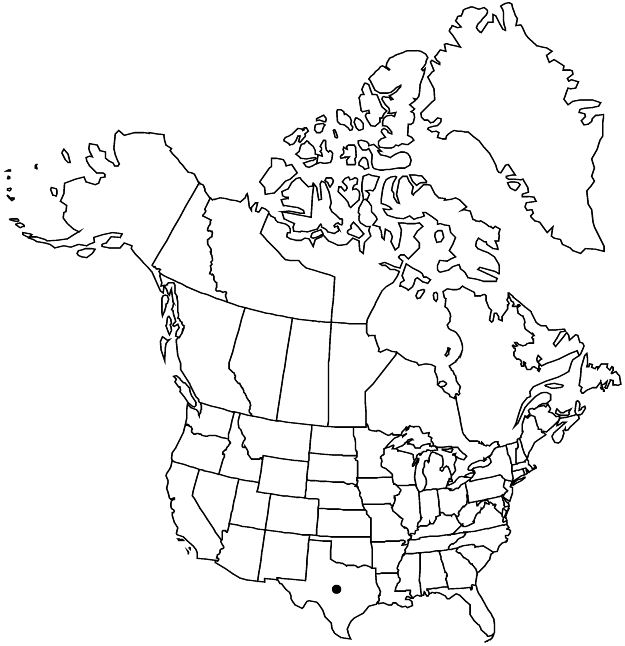Difference between revisions of "Cyclanthera stenura"
Phytoneuron 2014-11: 15, fig. 9. 2014.
FNA>Volume Importer |
imported>Volume Importer |
||
| (One intermediate revision by the same user not shown) | |||
| Line 51: | Line 51: | ||
|publication year=2014 | |publication year=2014 | ||
|special status=Endemic | |special status=Endemic | ||
| − | |source xml=https:// | + | |source xml=https://bitbucket.org/aafc-mbb/fna-data-curation/src/2e0870ddd59836b60bcf96646a41e87ea5a5943a/coarse_grained_fna_xml/V6/V6_21.xml |
|genus=Cyclanthera | |genus=Cyclanthera | ||
|species=Cyclanthera stenura | |species=Cyclanthera stenura | ||
Latest revision as of 22:19, 5 November 2020
Stems glabrous; tendrils unbranched. Leaves 3-foliolate, lateral pair of leaflets deeply lobed, petiolules 2–5 mm, terminal leaflet 3–5 cm, blade narrowly lanceolate, petiolule 3–12 mm, narrowly oblanceolate, gradually broadening into leaflet base, leaflet margins coarsely serrate; petioles 16–28 mm. Staminate inflorescences (0.5–)2–12 cm, floriferous portion (0.5–)1.2–6 cm, (12–)18–70-flowered, narrowly racemoid, with racemose or fasciculate lateral branches 3–7 mm; flowers solitary or in fascicles of 2–3. Staminate corollas 3.8–6.3 mm diam. Anther heads 0.6–1 mm diam., sessile, glabrous. Fruiting peduncles 2–7 mm. Capsules ovoid, distinctly oblique-gibbous, short-beaked, (12–)15–20 mm, spinules (2–)3–5 mm.
Phenology: Flowering (May–)Aug–Oct.
Habitat: Canyons, rocky slopes, among boulders, igneous soil, roadsides, pinyon-oak-juniper woodlands
Elevation: 1100–2500 m
Discussion
Cyclanthera stenura is distinct from C. gracillima in the more elongate and profusely flowered floriferous portion of its staminate inflorescence and its geography. It occurs in Brewster, Jeff Davis, and Presidio counties of the Trans-Pecos region of Texas.
Selected References
None.
